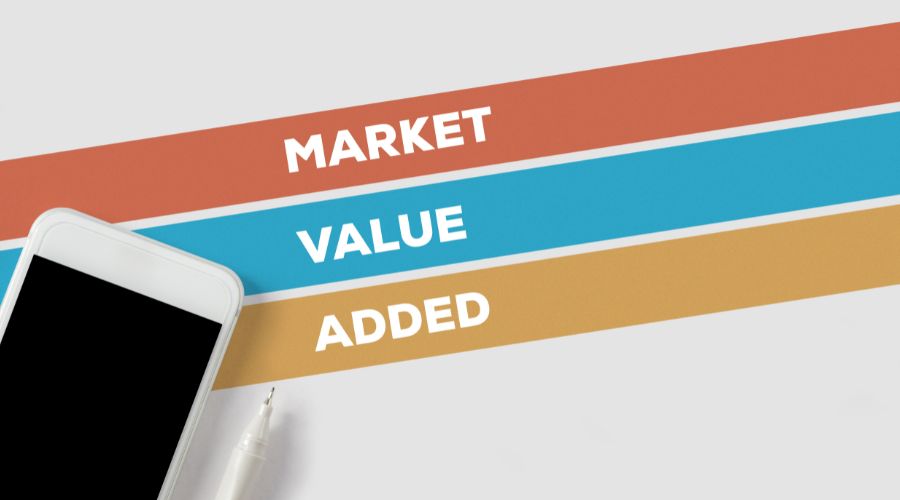Are you looking to buy micro-SaaS companies?
As the software market sector continues to expand and diversify, many entrepreneurs and professionals are seeking opportunities within the industry.
However, many folks simply don’t know how to break in. It’s clear that software as a service (SaaS) companies are gaining value, but most folks cannot afford to purchase or invest in massive, multi-million dollar corporations.
Enter micro-SaaS companies: the best solution for aspiring digital entrepreneurs.
Micro-SaaS acquisition can provide the ideal entry point into an otherwise cutthroat industry.
This post will illustrate how to buy micro-SaaS companies and what you should consider along the way.
What Is a Micro-SaaS Company?
Micro-SaaS companies are small software businesses that target a niche market and typically operate with a handful of staff and a small budget.
Their products tend to focus on niche services. For example, browser extensions are a standard micro-SaaS product.
Such companies offer unprecedented access to entry-level entrepreneurs and professionals seeking to break into the software sector since they are easy to start, acquire, and sell.
How Are Micro-SaaS Companies Different?
Micro-SaaS differs from general businesses in the following ways:
- Target Market: Micro-SaaS companies typically provide niche products that fulfill a need or resolve a pain point in a particular industry.
- Location Independence: Micro-SaaS companies are typically decentralized and do not rely upon localized operations or office spaces.
- Team Size: Micro-SaaS firms are often relatively small and employ a handful of people.
- Funding: Most micro-SaaS startups are self-funded and do not rely on outside financing.
- Goals: Most micro-SaaS businesses are relatively small, although it is possible for them to scale.
Why Are Micro-SaaS Companies Important?
There are many essential benefits to micro-SaaS models.
One reason why micro-SaaS companies are important is because they allow users to tailor and customize their digital experiences with pay-as-you-go practices and consistent updates.
Because micro-SaaS companies are typically small and affordable, they can empower first-time founders and low-budget entrepreneurs to break into the market and acquire capital with little effort.
Why Should You Buy a Micro-SaaS Company?
Buying a micro-SaaS company is a good idea if you:
- Want to break into the tech or software industries;
- Have any expertise in business management and tech;
- Are an emergent entrepreneur;
- Have a tight budget but wish to run a business;
- Wish to jumpstart your career rather than build from scratch, and;
- Want to generate consistent, recurring income without much overhead.
Ultimately, buying micro-SaaS is an excellent idea for most people since the risks are relatively low and the rewards can be promising.
What to Consider Before You Buy a Micro-SaaS Company
When buying a micro-SaaS company, consider the various features of the business and determine what you want out of your acquisition.
For example, if you are new to SaaS or business in general, consider choosing a smaller company.
Doing this can minimize your upfront cost and potential risk, allowing you to acclimate to the process before making further investments.
Use the following micro-SaaS business considerations as you navigate the acquisition process.
1. Your Budget

Assemble a budget based on your financial capabilities, loan eligibility, and goals.
When entering the micro-SaaS industry, it’s best to begin with a small acquisition and build your way up later if you wish.
If you plan to apply for a loan, gather all the necessary paperwork and initiate the process early so you can hit the ground running.
However, most micro-SaaS organizations are self-funded, bootstrapped, and typically do not rely on outside capital, so you can avoid the hassle of seeking and acquiring loans.
2. The Type of Product
There are three primary types of SaaS products. Although each offers different benefits, some have lower risks than others.
- Platform-dependent: These are products that rely on a platform.
- Platform-independent: These products don’t require a platform.
- Platform-integrated: These are products that work across different platforms.
Platform-integrated products are typically safest for first-time buyers, but you can always elect to acquire a different type of company and switch.
3. Financial Overview

Getting a snapshot of a company’s financial situation is crucial when acquiring.
You don’t want to purchase a company in deep debt or have evaded taxes for the last several years.
To that end, consider hiring a financial professional to examine the following:
- Credit card statements
- Corporate reports
- Bank ledgers
- Profits and losses
- Bankruptcy history
4. Business Reputation
Before acquiring a business, you should determine its reputation and its importance to you.
For example, acquiring a floundering company and restoring it to good standing will require more time, effort, and resources than purchasing a successful, highly regarded business.
To assess a business’s reputation, you can hire an expert or read reviews across third-party platforms.
5. Operations and Technical Considerations

There are two elements to consider in the realm of operations.
First, consider how the business is run.
You might want to hire an expert to assess the company’s operational structure and technical characteristics.
Also, take into consideration which elements of the business you may wish to change upon acquisition.
If you think you’ll need a team, begin assembling members.
How to Buy Micro-SaaS Companies
Once you are ready to make your first acquisition, follow the steps below.
Remember to keep your goals, values, and requirements in mind as you explore the market and seek businesses to buy.
Step 1: Determine Your Goal

Before making any investment, it’s best to determine your goal.
You probably wish to make money from your acquisition—but how will you do that?
One way to start is by determining if you wish to hold the company long-term or scale and sell.
Construct a timeline to guide your progress if you opt for the latter.
This prevents you from getting stuck in a business you want to get away from and protects you from floundering and wasting time and money.
Step 2: Compile a List of Key Features
Consider the features discussed above, including:
- Product: At the heart of every business is a product. Consider choosing a product that fits your interests or expertise. Though this isn’t necessary (or always possible), it can be advantageous.
- Operations: How has the business been run so far? Are operations efficient?
- Reputation: A quick Google search can reveal a lot about a company. Remember to do your due diligence.
- Financials: Assess the company’s financial situation and determine what you are comfortable with before investing.
- Legal liabilities and Entity Status: With any business acquisition, it’s essential to ensure that the company is a legal entity with no potentially costly liabilities.
- Projected Outlook: Based on current market statistics and projections, how do you think this business will do in the future? Remember to factor its performance into your assessment.
Step 3: Choose a Marketplace

Most micro-SaaS buyers start by identifying a marketplace and exploring their options.
Even if you don’t know anything about the industry, you can learn a lot from evaluating micro-SaaS companies on the market and comparing them to one another.
Consider getting a feel for the different marketplace options and learning to use filters, read data, and assess features and characteristics.
The most popular SaaS marketplaces are:
- FE International: Best of severe investors
- MicroAcquire: Best for quick acquisitions
- TransnsferSlot: Best for beginners
- Side Projectors: Best for founders and acquirers
Step 4: Explore Your Options and Gather Prospects
Using the criteria you assembled previously, explore your options thoroughly.
Depending on your marketplace, you may have access to a broker or advisor who will help you find and secure acquisitions on the platform.
Alternatively, you may have to assess businesses on your own.
If you are using a free platform, consider taking as long as you need—the more time you have to decide, the better.
On the other hand, if you are paying a subscription fee for your platform, you may need to work more quickly.
Gather your prospects into a list, and prepare to do a deep dive into each company’s operations and financials.
Step 5: Check the Company’s Entity Status and Tax Standing

When considering an acquisition, begin by verifying the company’s entity status and assessing the corporation’s annual reports.
Although the platform you use may claim to verify entity status and legal liabilities, it’s always best to do your research.
Step 6: Do Your Financial Due Diligence
Once you have selected your prospects, you will need further research to ensure that the company’s financials are in order.
Unless you have experience in this realm, consider hiring an accountant or enlisting further help since the process can be complex and lengthy.
Your accountant must comb through the company’s profits and losses, bank ledgers, corporate reports, and credit card statements to ensure you aren’t susceptible to fraud or financial mismanagement accusations.
Step 7: Research Marketing Value

Micro-SaaS companies are genuinely profitable, but there are always exceptions to the rule.
Some companies may present a mirage of value, which you can identify by asking yourself whether or not the company is growing and scaling. If it isn’t, it likely won’t anytime soon.
Consider opting for companies that show consistent growth and project further development.
Assess competition to determine if your company’s product is unique enough to compete with others.
Additionally, consider hiring a marketing or SEO expert to ensure the company’s past is free of shady practices like paying for links or social media followers.
Step 8: Connect With Founders and Negotiate
Once you’ve decided on an acquisition, connect with the company’s founders and begin the negotiation process.
If you’ve found any weaknesses in your careful assessment of the company’s features, you may be able to negotiate a lower sale price.
Remember that it’s always okay to say “no”. If you can’t agree on a price or you uncover an issue, it might be best to walk away.
Step 9: Acquire and Re-Launch

Once you’ve acquired your company, it’s time to get your team in order and dive into business.
During this time, get to know the company as much as possible and learn about its operations and development.
Consider hiring an expert to review the company’s code and determine whether you want to implement your system.
You want to be ready to hit the ground running as soon as your acquisition is complete.
Step 10: Plan Your Exit
From the beginning, you should have an exit plan to protect you from unexpected challenges and losses.
Set quantifiable goals and thresholds to determine your commitment to the company.
For example, you will commit to selling your business if you net a certain amount of losses.
As you manage your business, keep an eye on your key performance indicators (KPIs) and market performance.
If you need to sell your business eventually, it’s best to know sooner rather than later.
Feel free to watch this video to know how to buy and grow a software business to more than six figures.
Pros and Cons: Should I Buy a Micro-SaaS Startup?
There are many reasons to invest in a micro-SaaS startup. Consider the following pros and cons before making your decision.
Pros
Micro-SaaS firms offer the following benefits:
- Few overhead costs and resources: Micro-SaaS companies are typically efficient and boast low overhead costs, reducing your overall risk.
- Recurrent earnings: Although upfront costs are relatively low, you can gain substantial income from a micro-SaaS.
- Financial Independence: Since most micro-SaaS companies do not rely upon outside financiers, you can operate independently from third-party influence.
- Complete Ownership: With financial independence comes full ownership and agency. You can make all the decisions without having to consult investors.
- Automation: With micro-SaaS companies, you don’t have to worry too much about automation.
Cons
Just as there are advantages, there are also potential drawbacks to a micro-SaaS acquisition. Consider the following:
- Business Failure: Bankruptcy is a common concern among business owners, and micro-SaaS companies can fail like any other company. However, if you do your due diligence, you are unlikely to experience an unnavigable setback.
- Overlooking Business Flaws: If you refrain from doing your due diligence, you may miss structural issues, legal liabilities, or other flaws. Remember to do your research and hire an expert if necessary.
- Competition: There is always the possibility of another company snapping up your idea and doing it better. But, if you maintain an eye toward growth, you should be fine.
- Obsolescence: A new technical development in another sector could render your product obsolete, which is why consistent scaling is essential.
Final Thoughts on Buying Micro-SaaS
Ultimately, buying a micro-SaaS is a good idea for entrepreneurs.
A micro-SaaS acquisition can allow you to learn the ropes of the industry, acclimate to business norms, and accrue capital without much overhead cost.
As long as you do your due diligence and look into your acquisition—with the help of a professional when necessary—you should enjoy a pleasant experience.
Consider working with a micro-SaaS professional to learn more about the acquisition, management, and scaling for your new business—you’ll be glad you did.

